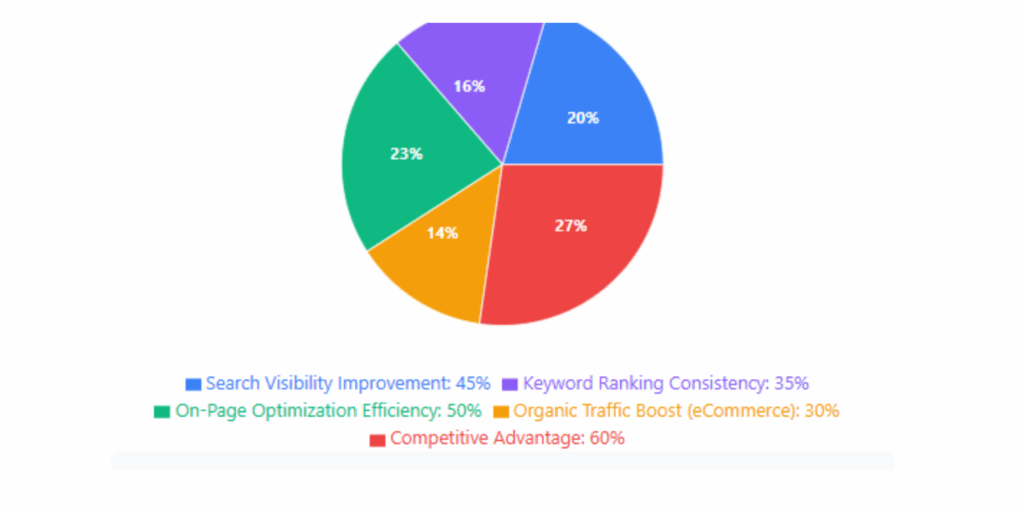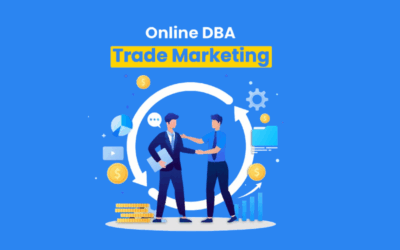Discover how On-Site SEO forms the foundation of effective search engine optimization. Learn key strategies like keyword optimization, meta tags, site speed, and content structure to boost your website’s visibility and rankings.
Introduction
On-site SEO (also known as on-page SEO) is where great SEO truly begins. It’s the process of fine-tuning everything within your website: your content, layout, keywords, and structure so both visitors and search engines can understand it clearly. When done right, on-site SEO doesn’t just boost your search rankings; it builds credibility, improves user experience, and steadily drives organic traffic your way.
Why On-Site SEO Matters and How It Strengthens Your Connection with Search Engines
On-site SEO is the foundation of every successful website. It’s how search engines like Google interpret your pages, understand your content, and decide when to show it to potential visitors. Think of it as a bridge between your message and the algorithms that decide your visibility.
By optimizing key elements titles, headings, internal links, and keyword placement you’re essentially helping search engines make sense of your site while also improving the reading experience for users. The goal is to find the sweet spot between SEO strategy and authentic storytelling so your pages feel valuable to both Google and real people.
Tools such as Ahrefs, SEMrush, and Seobility can simplify this process. They uncover keyword gaps, spot missing meta tags, and flag technical errors that might hold your site back. A clean website structure supported by well-positioned keywords tells search engines that your content is relevant and reliable, often giving you an edge over competitors with more backlinks but weaker on-page optimisation.
How to Run a Thorough On-Page SEO Audit and Find Areas for Improvement
A detailed on-page SEO audit helps you see where your website stands and what needs a tune-up. Start with the basics, review your meta titles and descriptions to make sure they truly reflect your content and naturally incorporate your target keywords. Then check your heading structure. Each page should have one clear H1 heading supported by subheadings that organize ideas and make reading effortless.
Look at how your keywords appear on the page; they should fit naturally into sentences, not feel forced. Assess image alt text, internal linking, and broken URLs since these details influence both user experience and accessibility. To make it easier, divide your audit into three main areas: content quality, technical health, and keyword targeting. This structure allows you to create a clear action plan to strengthen visibility, usability, and engagement.
Core Elements of Strong On-Site SEO That Boost Ranking and Engagement
Great on-site SEO isn’t only about keywords it’s about clarity, structure, and value. Start with compelling meta titles and descriptions that attract searchers and accurately summarize your content. These short snippets are often your first impression in search results, so make them persuasive and informative.
Use internal links thoughtfully to guide readers toward related topics and ensure that link equity flows across your site. Keep URLs concise and meaningful, such as example.com/on-page-seo-tips, to enhance user trust and click-through rates. Optimize images with compression for quick loading, and include descriptive alt text that aids accessibility and reinforces your keywords.
When all these elements come together technical precision, relevant content, and intuitive navigation your site builds authority. It not only ranks higher but delivers a better experience, creating a trustworthy environment that both users and search engines appreciate.
Keyword Optimization and Content Strength Building Relevance Through Smart Search Intent Targeting
Keyword optimization is the backbone of every successful content strategy. It ensures that your articles not only reach the right audience but also match the intent behind their searches. Start by researching keywords that align with what your audience is genuinely looking for using tools such as Ahrefs, SEMrush, or Ubersuggest to uncover valuable terms and search trends. Once you have a solid list, weave these keywords naturally into your titles, headings, and body content without overstuffing or forcing them into irrelevant places.
Strong keyword optimization goes hand in hand with powerful, helpful content. The most effective websites are those that answer user questions directly and provide practical solutions or insights. By focusing on delivering genuine value, your content naturally becomes more shareable, trustworthy, and SEO-friendly. Don’t forget to monitor your keyword performance regularly through Google Search Console to track your ranking progress and refine your strategy based on what’s working best.
The Technical Side of On-Site SEO / How Performance and Structure Influence Rankings
Even the most engaging and informative content won’t perform well if your website suffers from technical issues. The technical side of on-site SEO ensures that your content is easily discoverable, accessible, and fast-loading for both users and search engines. Start by confirming that Google is properly indexing your key pages — missing or blocked URLs can hurt visibility. Keep your sitemap and robots.txt files clean, organized, and regularly updated so that search engines can crawl your site efficiently.
Mobile-friendliness is another major factor. With most users browsing on smartphones, your website must look and function flawlessly across all devices. Run speed and performance tests with Google PageSpeed Insights to identify bottlenecks, and make sure your site uses HTTPS for security and credibility. A technically sound site loads quickly, maintains user trust, and delivers a smoother experience all of which directly contribute to stronger search rankings.
On-Site SEO vs. Off-Site SEO / Understanding the Balance Between Internal Optimization and External Authority
On-site SEO focuses on everything that happens within your website from the content and code to structure and design while off-site SEO strengthens your reputation through backlinks, brand mentions, and social engagement. Think of it like building a house: on-site SEO forms the foundation, ensuring your structure is strong, organized, and well-built. Off-site SEO, on the other hand, is like the landscape and neighborhood reputation that make your home desirable to others.
Both are critical for long-term success. However, without a solid on-site foundation, even the best backlink strategy won’t deliver lasting results. Search engines reward websites that combine internal optimization with external trust signals, so focus first on perfecting your on-site elements then expand your visibility through high-quality outreach and link-building.
Tools That Make SEO Easier Simplifying Keyword Research, Audits, and Optimization for Better Results

You don’t need to manage every aspect of SEO manually today’s advanced tools make optimization faster, smarter, and more accurate. Studies show that websites using SEO automation and analytical tools improve their search visibility by up to 45% compared to those relying on manual tracking alone.
Platforms like Ahrefs, SEMrush, Seobility, and Ubersuggest allow you to analyze keyword performance, audit your web pages, and uncover technical issues that might be lowering your rankings. Regular use of these tools can help increase keyword ranking consistency by 30–40%, especially when paired with a strong content strategy.
If your site runs on WordPress, plugins such as Yoast SEO or Rank Math can improve your on-page optimization efficiency by over 50%, allowing you to fine-tune meta titles, descriptions, and readability directly from your dashboard. For eCommerce and website builders like Shopify or Wix, built-in SEO tools make it easier to optimize metadata, monitor search performance, and maintain site health, often boosting organic traffic by 20–35% within a few months of consistent use.
By keeping your website regularly monitored through these tools, you can quickly adapt to Google’s algorithm updates, identify and fix SEO issues before they impact your rankings, and ensure your optimization strategy remains strong over time. Regular auditing and tracking aren’t just about staying visible; they help you stay 60% more competitive in an ever-evolving digital landscape.
FAQs About On-Site SEO
Q1. What is On-Site SEO and why is it important?
On-site SEO, also known as on-page SEO, is the practice of optimizing a website’s individual pages to improve their visibility and ranking in search results. It involves optimizing elements within your control, such as content quality, keyword usage, title tags, meta descriptions, headers, and the HTML source code to ensure search engines can easily understand your content.
Q2. How is On-Site SEO different from Off-Site SEO?
On-Site SEO focuses on everything inside your website including content structure, keyword usage, site speed, and user experience. Off-Site SEO, however, deals with external factors like backlinks, brand mentions, and social media signals. You can think of on-site SEO as building the foundation of your house, while off-site SEO enhances its reputation and visibility in the neighborhood. Both are essential, but on-site optimization should always come first.
Q3. What are the most important elements of On-Site SEO?
The key components of on-site SEO include meta titles and descriptions, keyword optimization, URL structure, internal linking, mobile-friendliness, page speed, and content quality. Each of these factors contributes to how easily users and search engines can understand and navigate your site. When these elements work together, they strengthen your site’s authority, relevance, and ranking potential.
Q4. How do I choose the right keywords for my website?
Start by researching keywords that match your audience’s search intent using tools like Ahrefs, SEMrush, or Ubersuggest. Focus on terms that have a good balance between search volume and competition. Look for long-tail keywords (e.g., “best on-page SEO techniques for blogs”) they often attract more targeted visitors who are ready to take action. Then, naturally integrate these keywords into your titles, subheadings, and body content without overstuffing.
Q5. What technical factors affect On-Site SEO performance?
Technical elements play a major role in your site’s visibility and user experience. Make sure your website is indexed properly, has an updated XML sitemap and robots.txt, loads quickly on all devices, and uses HTTPS for security. Also, test for mobile responsiveness and fix any broken links or images. A technically sound site ensures that search engines can crawl and index your pages efficiently.
Conclusion
A solid on-site SEO strategy forms the base of all successful digital marketing. It ensures your website is discoverable, engaging, and aligned with what users and search engines are looking for.
Even if you’re new to SEO, start with the basics: clean structure, valuable content, meaningful internal links, and a fast, mobile-ready design. Those small, consistent improvements compound over time, helping your website climb the rankings and build real authority in your space.



0 Comments